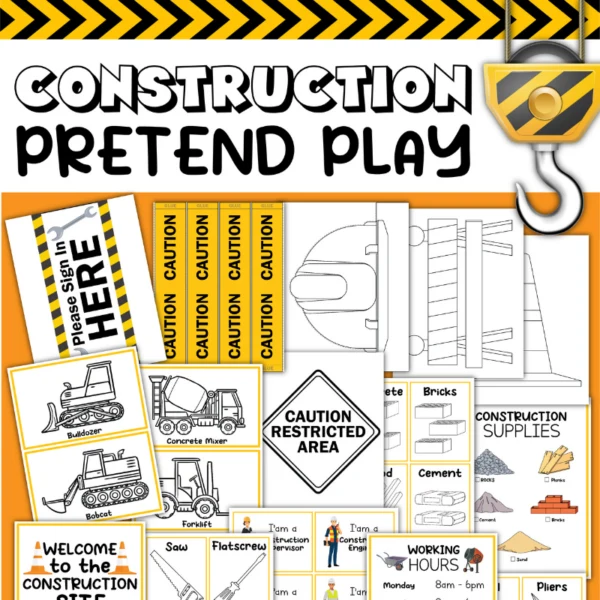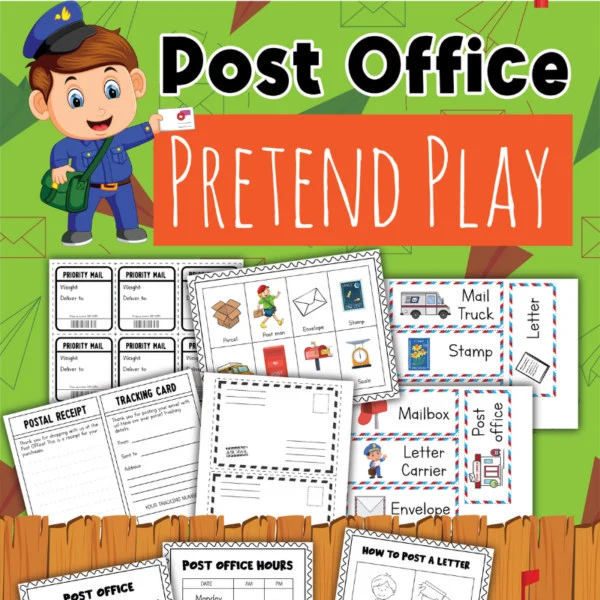The Flip It Child Development Activity is used in early childhood education to help children develop emotional regulation and resilience. It involves helping children identify and reframe negative thoughts or feelings into more positive and empowering ones. This is a crucial child development skill for children to learn!
Children can better cope with challenging situations, manage their emotions, and build resilience by learning to recognize and reframe negative thoughts. This can be done by acknowledging the negative feeling, understanding its cause, and then intentionally flipping it to a more constructive perspective.

Children can better cope with challenging situations, manage their emotions, and build resilience by learning to recognize and reframe negative thoughts.
This activity also fosters a positive mindset and helps children develop a more optimistic outlook on life, which can benefit their overall well-being and mental health.
The “Flip It activity is essential in child development because it teaches valuable emotional regulation skills.
Skills Enhanced by “Flip It” Activity
The “Flip It” activity enhances various skills in children, including visual discrimination and imagination.
These skills benefit children as they navigate various aspects of life, from academic pursuits to social interactions.
Skills Enhanced By This Activity:
Visual Discrimination Enhancement
Visual discrimination refers to the ability to recognize details in visual images, such as similarities and differences between objects, shapes, or symbols.
The Flip It activity can enhance visual discrimination by encouraging children to look beyond the surface and identify different perspectives or interpretations of a situation.
This involves recognizing subtle nuances, patterns, and details that may not be immediately apparent.
Imagination Enhancement
Imagination enhancement involves fostering a child’s creativity, original thinking, and the ability to envision alternative scenarios or possibilities.
Through the Flip It activity, children are prompted to imagine different outcomes or perspectives by reframing their initial thoughts or feelings into more positive and empowering ones.
This helps cultivate their imaginative capabilities and encourages them to consider alternative viewpoints and solutions.
Real-life Examples
The Flip It activity is a valuable technique to help children develop emotional regulation and resilience by reframing negative thoughts or feelings into more positive and empowering ones.
Visual Discrimination:
- Usefulness: Visual discrimination is essential for daily activities like reading, solving puzzles, and identifying visuals are crucial.
- Example: When reading, a child with enhanced visual discrimination skills can easily differentiate between similar letters or words, leading to improved reading comprehension and overall literacy.
Imagination:
- Usefulness: Imagination is crucial in creative problem-solving, adaptability, and innovative thinking.
- Example: When faced with a challenging task at school, a child with enhanced imagination can generate multiple creative approaches to solve the problem, showcasing adaptability and resilience.
By enhancing visual discrimination and imagination, children can develop a strong foundation for critical thinking, problem-solving, and emotional intelligence, vital for their overall growth and development.
Materials Required for Flip It Activity
The Flip It activity typically requires a coin, specifically a quarter, to facilitate reframing negative thoughts or feelings into more positive ones.
Using a quarter is a tangible and symbolic tool to help children visualize flipping their perspective. However, if a quarter is not available or suitable, there are safe alternatives to consider.
Why a Quarter is Used
The use of a quarter in the Flip It activity is based on its common association with value and exchange. A quarter represents a fraction of a whole, and its monetary value often conveys the concept of worth and transformation.
When engaging in the activity, children can physically “flip” the quarter to signify transforming their initial negative thoughts into more positive and empowering ones. This action can provide a visual and tactile reinforcement of the mental reframing process.
Suggestions for Safe Alternatives
If a quarter is not available or suitable for the activity, there are several safe alternatives to consider:
- Paper Discs: Cut out small circular paper discs to serve as symbolic tokens for the “flip” action. Children can decorate these discs to personalize them and make them visually engaging.
- Emotional Tokens: Use small, safe objects representing positivity or empowerment, such as colorful pebbles, tokens, or beads. These objects can be used in place of a quarter to symbolize the act of transforming negative thoughts.
- Digital Imagery: In a digital environment, utilize virtual images or animations of a quarter being flipped to convey the concept of transformation. This approach can be particularly effective in online or remote learning settings.
By considering these alternatives, educators and parents can ensure that the “Flip It” activity remains accessible and impactful, regardless of the availability of a physical quarter.
Instructions for Flip It Activity
Here are step-by-step instructions on conducting the activity and tips on encouraging the child’s participation and making the outcome fun.
- Begin by explaining the purpose of the activity to the child. Emphasize that it’s a fun way to transform negative thoughts into positive ones.
- Encourage the child to choose between “heads” and “tails” before flipping the coin.
- Once the choice is made, proceed to flip the coin.
- Upon revealing the result, guide the child to “flip” their initial negative thought into a positive one based on the outcome of the coin toss.
Tips on Encouraging the Child:
- Encourage the child to vocalize their initial negative thought or feelings before the coin is flipped. This helps them articulate their emotions and sets the stage for the subsequent reframing process.
- Create a supportive and non-judgmental environment to ensure the child feels comfortable expressing their emotions and engaging in the activity.
Handling the Outcome and Making It Fun:
Regardless of the outcome, celebrate acknowledging and reframing the negative thought. Encourage the child to embrace the opportunity for positive thinking.
Consider incorporating light-hearted actions based on the coin’s result to add fun. For example, if it lands on “heads,” the child could receive a high-five, and if it’s “tails,” they could give a high-five to someone else.
Following these instructions and incorporating encouraging and fun elements, the Flip It activity can help children develop emotional regulation skills while fostering a positive and supportive environment for their emotional well-being.
Learning Printables and Activities
These are excellent resources for kids! They’ll love being a part of the learning process from start to finish.



Safety Precautions for Flip It Activity
It’s crucial to prioritize child safety when conducting the Flip It activity, especially considering the potential hazards of using physical coins.
Here’s how to emphasize the importance of closely monitoring the child and additional safety measures to take into account:
Choke Hazard Awareness:
Close Monitoring: Supervise the child closely during the activity, particularly when handling small coins. Adult supervision is a must to prevent any potential choking hazards.
Safety Measures:
Appropriate Coin Size: For children’s activities, use larger, non-choke tokens or coins. This reduces the risk of accidental ingestion and choking.
Age-Appropriate Participation: Ensure the activity suits the child’s age and development level. Younger children may require more direct supervision and modified activity versions to ensure safety.
Awareness of Allergies: When selecting alternative materials for the activity, consider any child’s allergies. Ensure that the chosen materials are safe and non-toxic.
By emphasizing close monitoring and implementing these safety measures, caregivers and educators can create a secure environment for conducting the Flip It activity while mitigating potential risks.
Benefits of Flip It Activity
The Flip It activity offers numerous benefits for a child’s physical, cognitive, and social-emotional development. Here is how this activity enhances a child’s growth and skills:
Physical and Cognitive Development:
The Flip It activity involves physical interaction, such as flipping a coin or engaging in light-hearted actions based on the coin’s result. This physical engagement contributes to the child’s overall physical development and coordination.
The cognitive aspect of the activity lies in reframing negative thoughts into positive ones. This mental exercise encourages critical thinking, decision-making, and emotional regulation, fostering cognitive development in children.
Enhancing Visual Discrimination and Imagination Skills:
Choosing between “heads” and “tails” before flipping the coin encourages visual discrimination as the child focuses on the coin’s symbols. This can aid in enhancing their visual perception and discrimination skills.
Additionally, the imaginative aspect of reframing thoughts based on the coin’s outcome stimulates creativity and imaginative thinking in children, nurturing their ability to see situations from different perspectives.
By incorporating the Flip It activity into a child’s routine, caregivers and educators can promote holistic development by addressing physical, cognitive, and imaginative aspects while fostering emotional resilience and positive thinking.
Other Similar Activities
In addition to the Flip It activity, several other engaging activities can significantly enhance children’s visual discrimination and imagination skills. Here’s a brief overview of these activities and how they can be conducted:
Storytelling and Picture Prompts:
Overview: Storytelling with picture prompts encourages children to use their imagination and enhance their visual discrimination skills by interpreting and creating narratives based on visual stimuli.
Conducting the Activity: Provide children with pictures or visual prompts. Encourage them to craft original stories or narratives based on the visuals, allowing them to interpret and analyze the images while exercising creativity.
Pattern Recognition Games:
Overview: Pattern recognition games involve identifying and extending visual patterns, which promotes visual discrimination and cognitive development.
Conducting the Activity: Present children with visual patterns, such as shapes, colors, or objects. Encourage them to identify the patterns and continue the sequence, fostering their ability to discern visual similarities and differences while stimulating imaginative thinking.
Creative Drawing Challenges:
Overview: Creative drawing challenges prompt children to express themselves through art, enhancing their visual discrimination and imaginative skills.
Conducting the Activity: Offer various creative prompts or themes for drawing, such as “imagine your alien world” or “design your dream vehicle.” Encourage children to translate these concepts into drawings, fostering their visual discrimination and imaginative capabilities through artistic expression.
Educators and caregivers can provide enriching experiences that promote visual discrimination, imaginative thinking, and holistic skill development by incorporating these activities into children’s routines.
Importance of the Flip It Activity for Child Development
The “Flip It” activity is a multifaceted tool for fostering a child’s physical, cognitive, and imaginative development. By engaging in this activity, children can benefit from:
- Physical Engagement: Flipping a coin and engaging in light-hearted actions based on the outcome encourages physical coordination and movement, contributing to a child’s overall physical development.
- Cognitive Stimulation: By reframing negative thoughts into positive ones based on the coin’s result, children exercise critical thinking, decision-making, and emotional regulation, nurturing their cognitive development.
- Visual Discrimination and Imagination: Choosing between “heads” and “tails” before flipping the coin encourages visual discrimination. At the same time, the imaginative aspect of reframing thoughts stimulates creativity and imaginative thinking, thus enhancing these crucial skills in children.

Parents are encouraged to incorporate the Flip It activity into their children’s routines to promote holistic development and encourage positive thinking.
This simple yet impactful activity is easy to conduct and presents an opportunity for parents to engage with their children in a fun and meaningful way.
By actively participating in the Flip It activity, parents can contribute to their child’s physical, cognitive, and imaginative growth and establish a positive and supportive environment for emotional resilience and creative thinking.
Parents can create moments of enjoyment and learning that have the potential to leave a lasting, positive impact on their child’s development.


















